Cobija
Manuripi
Cobija
Manuripi
El Salar de Uyuni en Bolivia se form� por la desaparici�n de un oc�ano interior que cubr�a la mayor parte del Altiplano y se extend�a hasta el lago Titicaca. Es una experiencia extraordinaria cruzar este lago de sal en autom�vil.
El Lago Titicaca es el lago navegable m�s alto del mundo con una altura promedio de 3,810 metros sobre el nivel del mar. El Lago Titicaca es una gran atracci�n tur�stica para los amantes de la naturaleza.
La Paz es la capital administrativa de Bolivia. La altitud de la ciudad var�a desde aproximadamente 4058 metros (13,313 pies) sobre el nivel del mar en El Alto (donde se encuentra el aeropuerto) hasta 3100 metros (10,170 pies) en la zona residencial m�s baja. Es la capital nacional m�s alta del mundo.
Conoce el Camino de la Muerte, una carretera que conecta La Paz, capital de Bolivia, con la regi�n de los Yungas, un sendero que, en las �ltimas d�cadas, se ha ganado la fama del camino m�s mortal del planeta.
El Carnaval de Oruro se celebra como un signo de devoci�n a la Virgen de Socavon. El Carnaval de Oruro es uno de los mayores eventos culturales y festividades en Bolivia y Am�rica Latina.
Rurrenabaque (o simplemente Rurre) es un pueblo peque�o (poblaci�n 15,000) a orillas del R�o Beni en la cuenca amaz�nica boliviana. Los viajes a la jungla en el cercano Parque Nacional Madidi son las principales atracciones.
Las ruinas de Tiwanaku se encuentran cerca de la orilla sureste del lago Titicaca, a unos 72 km (44 millas) al oeste de La Paz, Bolivia. Tiwanaku es un sitio reconocido como Patrimonio de la Humanidad.
Una de las principales atracciones tur�sticas de Potos� en Bolivia es el Cerro Rico. Desde las profundidades de esta incre�ble monta�a, se han extra�do grandes cantidades de plata desde 1545.
Copacabana es un peque�o pueblo ubicado en la costa boliviana del lago Titicaca. Este es el Copacabana original y un popular destino tur�stico para viajeros.
El Parque Nacional Apolobamba se encuentra al oeste de La Paz, Bolivia y tiene una belleza esc�nica fant�stica debido a las altas monta�as cubiertas de nieve: Akamani, Presidente y Katantika.
El Parque Nacional Cotapata se encuentra al noreste de La Paz, Bolivia. Una de sus mayores atracciones es la ruta precolombina de Chucura o Choro o Camino Inca.
El Parque Nacional Madidi se encuentra al noreste de La Paz, Bolivia. Madidi es el �rea protegida con la mayor diversidad de flora: de 5,000 a 6,000 especies.
El Parque Nacional Noel Kempf Mercado en Santa Cruz, Bolivia ha sido declarado Patrimonio Natural de la Humanidad por la UNESCO. El parque Noel Kempf Mercado presenta una belleza esc�nica excepcional gracias a grandes farallones y cascadas de la meseta de Caparu.
La Isla del Sol se encuentra en el extremo noroeste de la pen�nsula de Copacabana, Bolivia. La Isla del Sol tiene varios monumentos antiguos: el Palacio Pilkokaina y el Chinkana o Laberinto, La Escalera de los Incas, la Fuente Sagrada de la Juventud y las Terrazas de los Incas.
El Parque Nacional Sajama se encuentra al noroeste de Oruro, Bolivia. Cuenta con la imponente monta�a nevada de Sajama, lagunas altoandinas, aguas termales y rutas de andinismo.
La regi�n de Yungas se encuentra a casi tres horas de La Paz, Bolivia. El paisaje es una combinaci�n de laderas verdes, precipicios, r�os, cascadas y vegetaci�n moderada.
Uyuni en Bolivia es una peque�a ciudad situada en el medio de la nada. El turismo es su principal fuente de prosperidad gracias al Salar de Uyuni, el mayor del mundo.
La primera línea férrea en Bolivia fue Uyuni-Antofagasta e inicio trabajos el año 1899 y construida por ingenieros británicos quienes arribaron a Uyuni cerca del final del siglo XIX formando la pequeña comunidad de Uyuni.
Las misiones jesu�ticas en Bolivia se han mantenido intactas e incluso despu�s de cientos de a�os siguen maravillando a los visitantes. Est�n ubicados en las tierras bajas orientales de Santa Cruz, Bolivia, a unas 6 horas de la ciudad.
En lo alto de los Andes, lejos del ajetreo y el bullicio de La Paz, se encuentra una estaci�n de esqu� hermosa pero misteriosa, una vez famosa por ser la pista de esqu� de m�s alto rendimiento en el mundo.

Tarabuco is located at 60 Km. from Sucre, Bolivia. Tarabuco has a very colorful Sunday fair where local residents exhibit outfits, helmets and ponchos of various colors, designs and patterns.
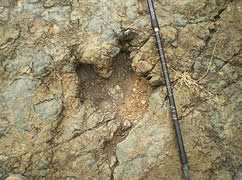
At 5 kms from the city of Sucre in Bolivia lies Cal Orcko, a giant 80 meters hight and 1.2 kilometers long wall that has petrified footprints of dinosaurs. Cal Orcko is one of the most important pre-historic findings in the world.

Sucre and Potosi are the best known colonial cities in Bolivia. Sucre, the White City, is the constitutional capital of the Republic of Bolivia. Potosi is, at around 4000 meter, the worlds highest city. The mines of the Cerro Rico are the richest mines in all of world history.

On August 6, 1825, the freedom fighters of Bolivia assembled in the Casa de la Libertad to declare independence from Spain. You can visit the exact same room where the liberators met. The first Bolivian congresses were held in the Salon de la Independencia, originally a Jesuit chapel.

The Castle of la Glorieta in Sucre, Bolivia, is a unique attraction which used to belong to Don Francisco de Argandona. The Castle of la Glorieta was constructed towards the end of the XIX century and exhibits various architectural styles - Mudejar or Mohammedan Style, neoclassic, baroque and neo-gothic.
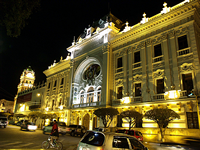
For the best view of Sucre, Bolivia, climb up up to the cupola of the wedding cake-like building of the Prefectura de Chuquisaca, next to the cathedral.

The Cathedral in Sucre, Bolivia dates from the middle of the 16th century and is a harmonious blend of Renaissance architecture with later Baroque additions. The Catedral Basilica is considered to be the most valuable religious monument of Sucre.
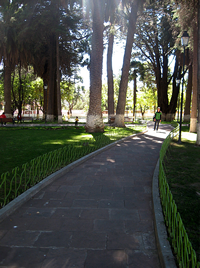
Parque Bolivar (Bolivar Park) in Sucre, Bolivia, is an open-air park which has an interesting collection of miniature replicas of famous French monuments such as the Eiffel Tower, the Arch of Triumph and the Obelisk of Buenos Aires. Parque Bolivar is the Sucre's favourite lovers' hangout.
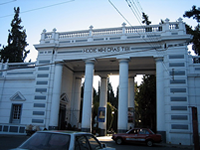
The general cemetery in Sucre, Bolivia, is one of the best options to go and learn a bit more about the life of known historical and political figures of the past, whose remains rest at this important landmark.
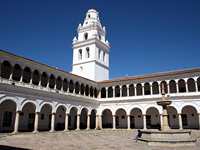
University of San Francisco
Sucre
The University of San Francisco in Sucre, Bolivia, was founded on March 27th, 1624 by Padre Juan de Frias Herran.

La Recoleta Convent dominates the landscape of the city of Sucre in Bolivia, resting at the bottom of the Churuquella mountain. The Look-Out Point of Recoleta is located atop of one of the seven hills where the city of Sucre was actually founded.

There are many important museums in the city of Sucre, Bolivia, dealing with religious, colonial, republican and ethnografic themes. This article is a brief description of the most important ones.
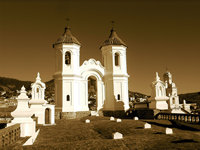
There are many remarkable churches in the city of Sucre, Bolivia. This article is a brief description of the most important ones.

Inca machay and Puma machay are 1000 to 2500 year old pictographic rock paintings near the city of Sucre, Bolivia.

Supay Huasi is a series of rupestrian paintings near Sucre, Bolivia, which correspond to the era on which ceramic pieces began to be painted in the Valley area of Bolivia. The name means House of the Devil. The actual scenery and the overall beauty of the place are additional attractions.

P'Ita Orko is made up of four panels located around a path belonging to the period where ceramic paintings were not common in the region of the Americas. Their antiquity is estimated to be more than 2500 years.

At only eight kilometers from Sucre in Bolivia, there are several waterfalls of pure, crystalline water, which provide a very picturesque and unique view. In the surrounding areas there are seven waterfalls.
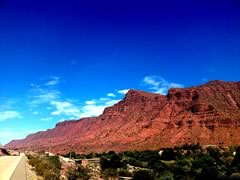
On the road to Tarija in Bolivia is Higuerayoc or Abecia Village. This valley is ideal for grapevine production and the bathing results have amazingly clean and pure water which attract a lot of visitors.

At 130 kilometers from the city of Sucre in Bolivia and near the town of Presto is "El Palmar" (Palm Tree Oasis), a protected area with palm tree forests of Parajubaea Torrally Burret (Janchi coco) and various other species of animals such as the "Jukumari" bear.

The valley of Icla near Sucre, Bolivia has a very pleasant climate. There is a canyon here where the crystal clear and pure waters of the Icla River run through. Amid this beautiful scenery, there is an important deposit of paleontological remains.
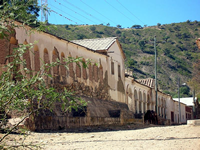
Cachimayu near Sucre, Bolivia is one of the main areas where the Pilcomaya River runs through a populated area. On the riverside there are luxurious and leafy gardens and orchards, and several country homes such as the 'Cabanas Cachimayu' (Cachimayu Cabins).
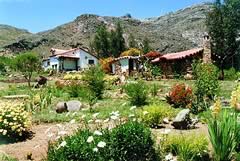
Bramadero or the Refuge of the Mountaom, is located at the bottom of the Mountain of Chataquila, at 35 kilometers from Sucre, the capital of Chuquisaca department in Bolivia. Bramadero has several and very comfortable cabins, which allow visitors to enjoy a very unique view of the entire area.
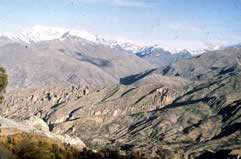
San Juan near Sucre, Bolivia is a place for country excursions. San Juan is highly suitable for mountaineering as well as enjoying the fresh waters that flow from the high peaks.
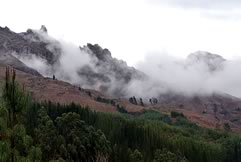
Cajamarca near Sucre, Bolivia, is a piece of the higher portion of the valley, and has several sections of pine trees and kewinas (local species of trees) forest.

After going through Yotala, at 23 kilometers from Sucre in Bolivia is the bathing resort known as Nujchu. Nucchu is a place with pleasant climate great for excursions, camping and bathing. An old sunny house stands as memory to Antonio Jose de Sucre president.

Emerging from a long chain of mountains pickled by canyons and waterfalls, Yotala near Sucre, Bolivia, is a very picturesque town. The most important folkloric-religious event is celebrated annually on the 30th of August during the feast of Santa Rosa.

Quila Quila near Sucre, Bolivia, is and old colonial style town that has strong Pre-Hispanic roots,located at a height of 3,100 meters above the sea level. The streets have been built on straight angles and are surrounded by homes made of mud and roofs made of straw.
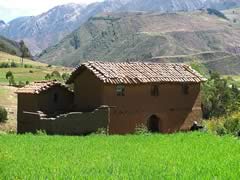
Potolo near Sucre in Bolivia, is famous for its conical hats and beautiful textiles that have several designs of animals such as: vicunas, llamas, eagles, condors, frogs, etc. The textiles have certain interesting names such as: llijllas and chuspas. They continue to be used as the most typical outfits of the area.
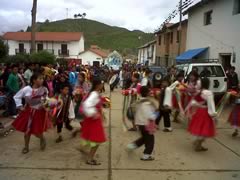
Near Tarabuco, Bolivia (at 26 kilometers) is the town of Candelaria, the cradle of masterful weavers and schemers. The work of the women from Candelaria, done entirely by hand, is highly coveted mostly because of its symmetry, the figures and the wonderful usage of color.
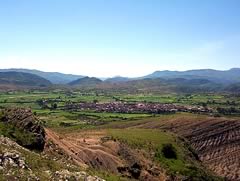
The traditional Carnival and the archaeological remains of the surrounding areas, make the town of Padilla in Bolivia one of the main tourist attractions of Chuquisaca.

'Villa Serrano' (Serrano Village) near Sucre, Bolivia, is known for the unique way in which its inhabitants celebrate Christmas. Aside from this colorful festivity, this town is well-known for the production of some of the finest charangos (small guitars invented in Bolivia).

Between Sucre and Potosi in Bolivia is the canyon of Camargo, a valley where the grapevine production is one of the main sources of income and long standing tradition. Fine wines are elaborated here as well as 'Singani' (Singani: a typical Bolivian drink, hard liquor made of wine remains).

Oropeza and Zudanez Provinces
Sucre
The skilful indigenous residents of Oropeza and Zudanez Provinces in Bolivia elaborate traditional fabrics of great quality, which are highly prized throughout the world.
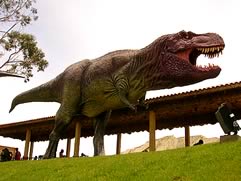
Cretaceous Park (Cal Orck'o)
Sucre
Cretaceous Park (Cal Orck'o) is definitely one of the most unique attractions in Bolivia. 65 million years ago the site of Sucre's Fancesa cement quarry, six kilometers from the centre, was the place to be for large, scaly dinosaurs.